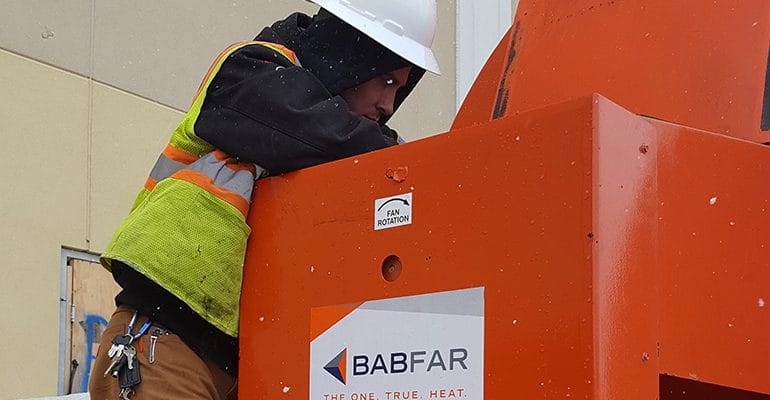Choosing a temporary heater is not an
apples-to-apples comparison. Nor is choosing a temporary heating company. Just as different heaters offer different levels of performance, rental companies offer different levels of service. Some temporary heater rental companies will only deliver the equipment. Others will provide valuable services that save you time and money (and a lot of headaches). What should you look for? When making comparisons, add these five services to your checklist:
Site Assessment
Determining heating requirements for a construction project is more involved than plugging numbers into an
online sizing calculator. Usually, oversimplified calculators will oversize recommendations. The best way to pinpoint heating requirements is to review building plans and walk through the structure. Temporary heating companies should know how to utilize airflow to distribute heat, right-size heaters, and save you money.
SetupBefore the temporary heaters arrive, it’s important to plan the placement of the equipment. Safety and maintenance considerations made ahead of time will minimize the risk of downtime during the project. For example, space is needed between the heaters and the structure, so the unit can be accessed during preventative maintenance or to reset any of the safety switches. If a unit is positioned too close to a building, it may block heater doors. Consideration should be made regarding the fuel supply, as well. To save on piping costs and to reduce exposure to potential problems, natural gas heaters should be placed close to the meter. Similarly, propane temporary heaters should be placed where there’s adequate space for tanks. So, work closely with your heating vendor to anticipate issues related to the placement of units before they arrive on site.
InstallationDuring installation, there are three areas you and your temporary heating company should pay close attention to: Fuel supply, electricity, and ductwork. Whether you’re using vapor- or liquid-withdrawal heaters, make sure your propane supplier uses the correct valve on the propane tank. Also, double-check electrical and gas hookups with tradesmen. For example, if natural gas is used, a different diameter pipe may be needed depending on the volume of gas required and the length of pipe used. A review of ductwork, of course, ensures efficient heat distribution throughout the structure. Installation time is the best time to make sure units run safely & efficiently and to prevent issues that might affect heater performance during the project.
StartupFactory-trained technicians, who are very familiar with the heaters, should start the units. Techs should also provide a
Temporary Heaters 101 training, so you understand the basics of operating, troubleshooting and re-starting units if needed.Technicians should also double-check everything covered in the previous steps, such as fuel hookups, electricity, and unit placement. Special attention should be given to ensure heat is distributed as planned. This may involve checking the rigidity of ductwork (to avoid back pressure and heater shutdown) and placement of cutouts to ensure a proper air change. At Babfar, we also follow-up within the first few days to make sure everything is running smoothly.
Ongoing SupportConstruction projects are always changing. And these changes can affect temporary heater performance. Maybe an elevator shaft, initially used for distributing hot air, has been enclosed? Maybe air vents cut in poly sheeting were replaced with windows? Or, maybe, poor weather has delayed pouring concrete, which further delayed plans for the rest of the building?Ongoing preventative maintenance ensures heating systems continue meeting heating requirements as a project evolves. Beyond checking the health of your heating units, technicians should look for changes on site that can affect airflow and heat distribution. No doubt, throughout the project there will be problems to fix and opportunities for improvement.Contractors manage lots of moving parts. They don’t have the time to set up or maintain temporary heating systems. At the same time, heat distribution problems can cause costly delays. Make sure your temporary heating company goes beyond the rental unit and provides proactive service and support that will keep heaters running smoothly during the life of your project.





